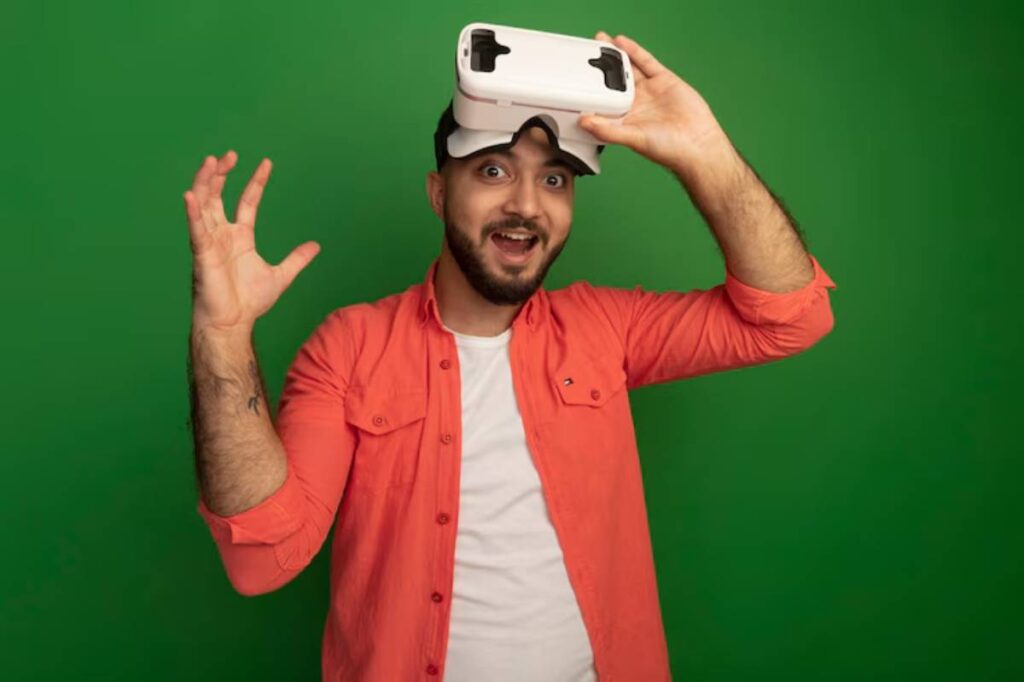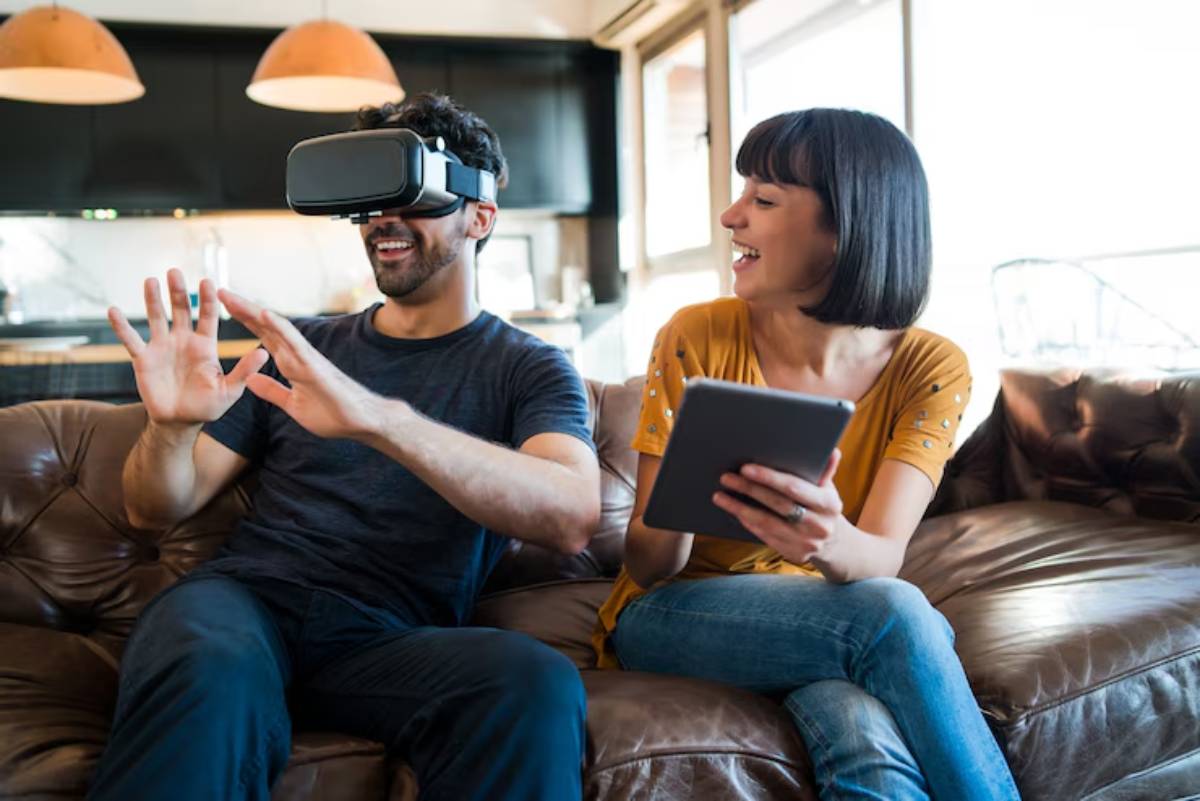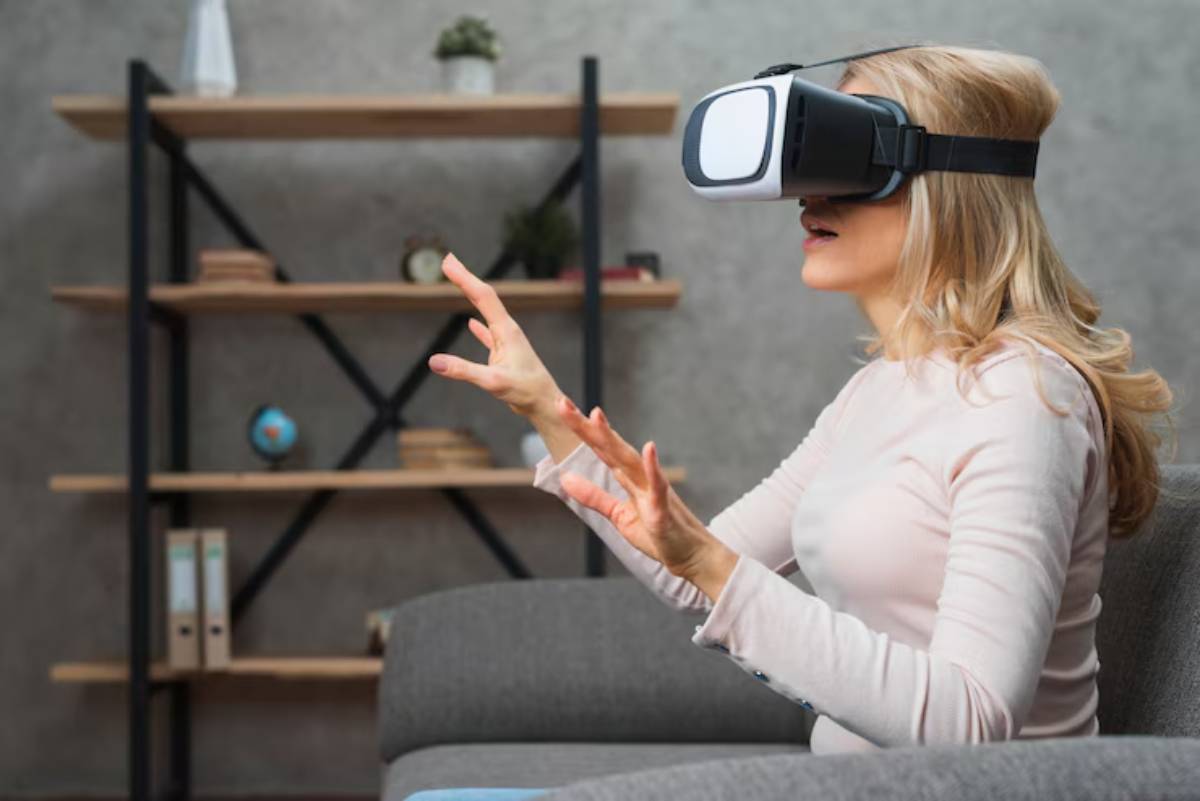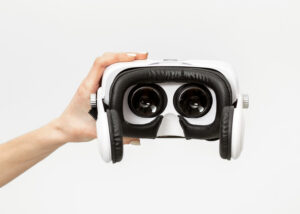The Gaming Blog

How to Pick the Right VR Headset for Your Needs
Choosing a virtual reality (VR) headset can feel like stepping into the Matrix. With dozens of options, overlapping features, and a wide range of prices, making the right decision isn’t always straightforward. But whether you’re chasing adrenaline in VR games, exploring fitness-based worlds, or diving into professional simulations, the headset you choose can completely transform your experience.
The wrong choice could leave you stuck with blurry visuals, lagging performance, or limited compatibility. The right one can open a gateway to immersive entertainment, interactive fitness, and creative freedom.
This comprehensive guide will help you choose a VR headset that fits your lifestyle, technical needs, and long-term goals.
Understanding the Core

What is a VR Headset — and Why the Right One Matters?
A VR headset is a wearable device that places you in a simulated 3D environment. It uses stereoscopic displays, motion sensors, and spatial audio to create an immersive experience. But not all headsets are created equal. Some require high-end PCs, others run independently. Some focus on gaming; others target fitness, media, or enterprise use.
The “right” headset depends on your usage intent, platform, budget, and physical comfort. A fitness enthusiast may need something lightweight and breathable, while a PC gamer might prioritise high-resolution optics and refresh rates.
Industry leaders like Meta, HTC, Sony, and Pico continuously update their offerings, making it vital to stay informed.
Pro Tip: Look for headsets with adjustable IPD (interpupillary distance) to ensure a clear image for your eyes.
Quick Guide: Checklist at a Glance

Before diving deep, here’s a high-level overview of what you should evaluate:
- Define your primary use case (gaming, fitness, simulation, etc.)
- Determine your preferred platform (PC, console, standalone)
- Set a realistic budget, including accessories
- Check for display type and resolution quality
- Confirm refresh rate and field of view specs
- Evaluate comfort, adjustability, and fit
- Investigate the software ecosystem and compatibility
- Look for upgrade options (controllers, battery, face covers)
- Read reviews on tracking performance and latency
- Match headset specs to your space and setup environment
Important Note: Cheaper headsets may not support software updates or have limited app libraries — check support longevity.
Step-by-Step Guide: How to Practise Smart VR Buying

1. Start with your use case
Are you aiming to get fit with rhythm-based games or planning to mod Skyrim VR on a PC? Your goal matters. Content libraries and hardware specs vary greatly between fitness-first, media-heavy, and simulation-intense headsets.
2. Choose a platform that suits your devices
- Standalone: Great for wireless freedom (e.g., Meta Quest 3)
- PC VR: Delivers superior graphics but needs a powerful PC (e.g., Valve Index)
- Console VR: If you already own a PlayStation 5, the PSVR2 might be the best value
3. Set your budget, then consider the extras
Entry-level headsets like Quest 2 start under £300. Mid-range and premium headsets can go over £1,000. Don’t forget to include:
- Extra straps
- Charging docks
- Controller replacements
- Protective cases
If you’re working within a tight budget, explore our guide to the best VR headsets under £300.
4. Compare displays: resolution, refresh rate, and FOV
Better image quality means less motion sickness and more immersion.
- Resolution: 1832 x 1920 per eye is a good benchmark
- Refresh Rate: Aim for 90Hz minimum
- Field of View: Wider FOV creates better peripheral awareness
5. Assess comfort and wearability
You’ll likely wear your headset for hours. Key comfort features include:
- Adjustable head straps
- Replaceable face pads
- Lightweight build
- Heat ventilation
For extended use, see our review of lightweight VR headsets for long sessions.
6. Check the ecosystem: games, apps, and updates
Make sure the device supports your preferred titles, whether that’s “Beat Saber,” “Half-Life: Alyx,” or VRChat. Also check:
- Access to app stores
- Developer support
- Community mods
7. Evaluate tracking systems
Tracking affects how your headset recognises movement. Options include:
- Inside-Out Tracking (cameras on the headset)
- Outside-In Tracking (external sensors)
Inside-out is easier for beginners; outside-in is more accurate for pros.
8. Consider long-term use and expandability
Ask yourself:
- Can you replace the strap?
- Is the battery swappable?
- Can it connect to a PC later?
A headset that grows with your needs saves money down the line.
Best Practices & Additional Insights
- Test in-store if possible: Trying different models can help you gauge comfort and visual clarity
- Look for bundles: Some retailers offer headset/controller combos or fitness-focused packs
- Ventilation matters: Especially for fitness use — poorly ventilated headsets can fog up and get sweaty quickly
- Ask your community: Reddit forums like r/virtualreality and VR Discord servers are goldmines for real-world reviews
- Be aware of motion sickness: New users may feel dizzy — start with low-motion games and work your way up
Imagine Sarah, a 42-year-old architect, who initially bought a VR headset for design walkthroughs. A year later, she found herself playing table tennis every morning for fitness. Her success came from choosing a headset that supported both PC tethering and standalone apps — planning ahead matters.
FAQs
What’s the best VR headset for beginners?
For ease of use, Meta Quest 2 is widely recommended. It’s affordable, standalone, and beginner-friendly.
Is PC VR better than standalone?
Yes — but only if you have a powerful PC. PC VR offers better graphics and mods, but requires cables and setup space.
Can I use VR if I wear glasses?
Most headsets support glasses, though comfort varies. Some offer lens inserts or adjustable spacing for clarity.
How much space do I need for VR?
For standing or seated experiences, a 2m x 1.5m area suffices. Room-scale VR requires at least 2m x 2m of clear floor space.
Is it safe for kids to use VR?
Use age recommendations from manufacturers. Many devices are designed for users aged 12+. Use parental controls where available.
Conclusion
Picking the right VR headset can feel overwhelming, but when you focus on your specific needs, platform preferences, and future use cases, the choice becomes much clearer. Whether you’re gaming, working out, or exploring virtual worlds, the right headset transforms your experience from basic to breathtaking.
Your journey into VR starts with a smart decision — now that you know what to look for, take the leap with confidence.
Ready to get started? Share this guide, bookmark it, or comment below with your favourite VR pick.









